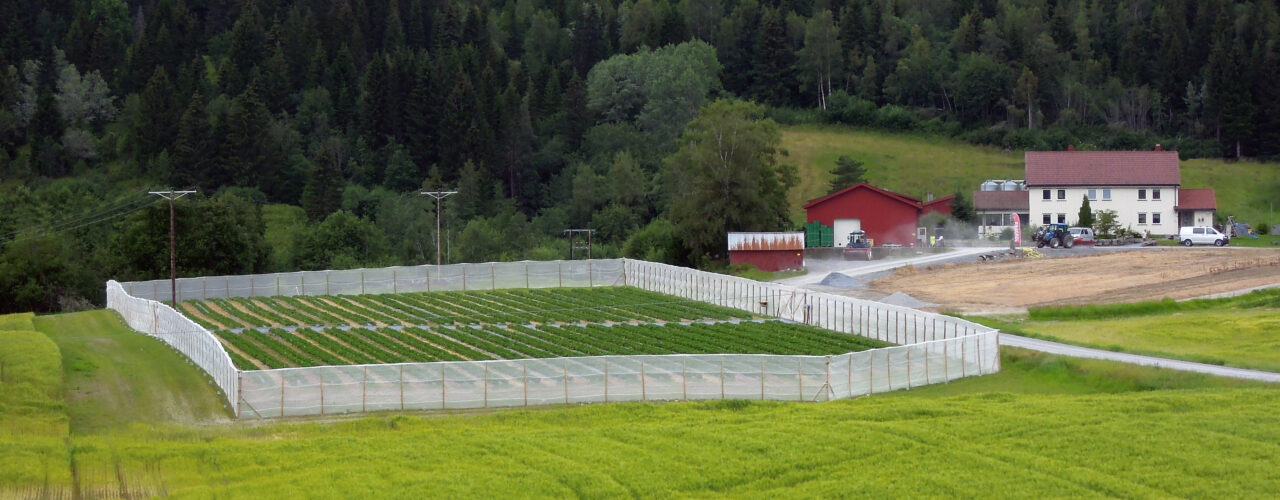
FenceTrap - Combined use of alternative measures to reduce insect damage in strawberries
Early in the spring, adult strawberry blossom weevils (Anthonomus rubi) migrate from overwintering shelters to strawberry fields. Here they start feeding on the foliage and mate at the onset of bud formation. The eggs are deposited singly into flower buds which the weevils partially sever from their stalks. The bud formation is thus terminated and the bud will not open, and this leads to a direct loss of crop. In some cases, farmers and agricultural advisors have observed more than 80% loss of flower buds, even with use of insecticides.
A fence of fine-mesh insect net was set up around a newly established strawberry field of 4.2 da. The fence is 2.3 m high and on top of the net, there is a fold to prevent climbing weevils to enter the field. On the outside, there are insect funnel traps with attractive volatiles. Weevils obstructed by the fence can then be caught by the traps.
